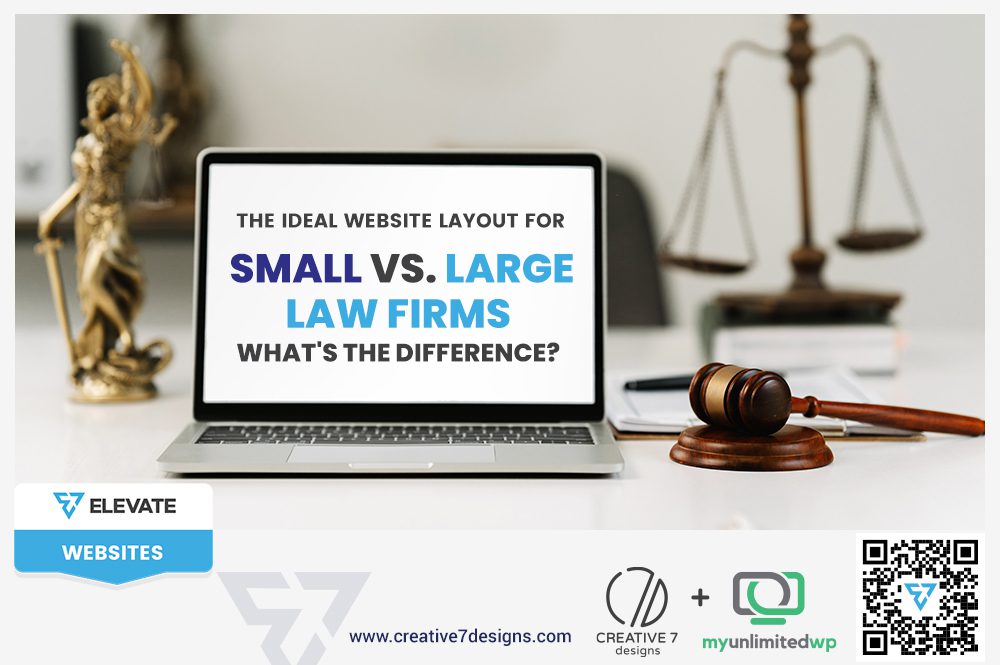Overview: Small and large law firms need different website strategies to attract clients and establish credibility. Learn the key layout differences and best practices for each in this guide.
When it comes to law firm websites, one size does not fit all. The structure and design of a website should align with the firm’s size, client base, and goals. A small law firm needs a streamlined, client-focused approach, while a large firm must prioritize scalability, branding, and multi-practice navigation.
Let’s break down the key differences in website layout for small vs. large law firms and how each can optimize their digital presence.
Small Law Firm Websites Require Simplicity & Personalization
Smaller firms often rely on direct client relationships, so their websites should reflect trust, accessibility, and expertise. Here’s what matters most:
Clear & Concise Navigation : A small firm’s website should have an intuitive layout with essential pages:
-
Homepage – A welcoming, client-centric introduction.
-
About Us – Highlighting the firm’s values and personal touch.
-
Practice Areas – A clear overview of legal services.
-
Contact Page – Easy-to-find contact forms and scheduling.
Strong Call-to-Actions (CTAs) : Since small firms often depend on direct inquiries, CTAs like “Schedule a Consultation” or “Call Now” should be prominent.
Mobile-First Simplicity : Many clients will visit the site from mobile devices, so a clean, fast-loading, and mobile-friendly design is crucial.
Large Law Firm Websites: Scalability & Brand Authority
Larger firms serve diverse clients, often across multiple legal disciplines and locations. Their websites need to balance professionalism, content depth, and easy navigation.
Multi-Level Navigation & Search Functionality : A large firm’s website should have:
-
A structured menu with categorized legal services.
-
A robust search bar to help users find attorneys, practice areas, or resources.
Attorney & Practice Area Pages : With multiple attorneys and specializations, dedicated bio pages and detailed practice area descriptions are essential for credibility.
Thought Leadership & Resources : Larger firms must showcase authority through:
-
Blogs & Articles – Legal insights and updates.
-
Case Studies & White Papers – Demonstrating expertise.
-
Webinars & Videos – Engaging content for clients and industry professionals.
Branding & Trust Signals : Reputation matters. Large firms should highlight:
-
Awards & Recognitions
-
Press Mentions
-
Client Logos & High-Profile Case Studies
Lead Generation & CRM Integration : For efficiency, large firms often integrate their sites with CRM tools, AI chatbots, and appointment scheduling systems for client intake.
In Summary
Whether you’re a small boutique firm or a large multi-practice legal powerhouse, your website should align with your business goals. Small firms should focus on simplicity, accessibility, and direct engagement, while larger firms must prioritize navigation, content depth, and branding.
By structuring your website strategically, you can create a seamless user experience that attracts, informs, and converts potential clients.
Reach out to Elevate: Websites for more!


